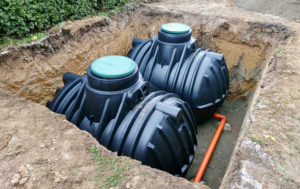Ceiling Insulation Perth is an important part of a home or building. It helps to minimize heat transfer, lower energy costs and provides a range of other benefits.

Installing insulation during the construction phase allows you to choose from batt, blown-in products or spray foam. Its low cost and long term benefits make it an ideal investment.
Insulating your ceilings is one of the most cost-effective home improvement projects you can undertake. It prevents energy loss by preventing heat from escaping in the winter and keeping it out in the summer, making your heating or cooling system work less to maintain a comfortable temperature. With proper insulation, you can save up to 30% on your energy costs.
In addition, a properly insulated home reduces HVAC wear and tear, prolonging the life of your equipment and reducing maintenance expenses. It also protects the integrity of your building, minimizing the risk of water leaks and mold growth. Additionally, it improves indoor air quality by limiting drafts and moisture and trapping allergens that can circulate through your ventilation system.
Whether you are building a new home or upgrading an existing one, there are many different insulation options available to meet your needs. For unfinished spaces, blanket insulation (also known as batt insulation) is a good choice. It consists of pre-cut panels of fiberglass, mineral wool, or cellulose that are designed to fit between your attic joists. It is available in varying thicknesses and densities, so you can choose the level of thermal and acoustic performance that best suits your needs.
For finished homes, spray foam insulation is a good option as it creates an airtight seal, eliminating gaps and blocking drafts. It’s made from an environmentally friendly material that expands to fill the smallest gaps and cracks, providing maximum protection. It is also available in varying thicknesses and densities, depending on your climate zone and the type of home you have.
It’s important to hire a professional to install insulation. They have the tools and knowledge to do the job safely and correctly, and they may be able to help you qualify for rebates. Plus, a professional can provide advice on which insulation is best suited for your home.
Improves Indoor Air Quality
Insulation acts as a barrier that keeps allergens and pollutants from entering living spaces. This is especially important in regions where there is a constant presence of dust, dirt, pollen and other airborne contaminants. When these particles enter a home through ceiling cavities, they can aggravate respiratory and other health problems in people who suffer from allergies or asthma. By blocking these particles, insulation helps to improve indoor air quality, creating a healthier and more comfortable environment for all residents of a home.
Insulating a ceiling also helps to keep the temperature in a home more consistent, which reduces the need for excessive heating and cooling. This saves money on energy costs and helps to lower greenhouse gas emissions that contribute to climate change.
Many homeowners struggle with uneven temperatures throughout their homes, with cold rooms in the winter and hot ones in summer. Uninsulated and poorly insulated ceilings allow warm air to escape through the attic, increasing heating and cooling costs and contributing to high energy bills. Insulation helps to seal gaps and cracks in ceilings, keeping the temperature more consistent all year round, reducing energy consumption and providing a more environmentally sustainable home.
A properly installed attic with insulation can also reduce the amount of humidity in a home, which can be a major contributor to the growth of mold and mildew. Those with allergies, asthma and other respiratory conditions can be particularly sensitive to the growth of these fungi, which can lead to more serious health complications in immunocompromised individuals. Insulation prevents moisture from collecting in uninsulated or improperly sealed spaces, making it harder for these fungi to thrive.
There are several options for insulating your home’s ceiling, including fiberglass and cellulose, as well as spray foam. Spray foam offers the highest R-value and provides a more complete, dense form of insulation than either cellulose or fiberglass. It can be used in a finished or unfinished space and is suitable for use in both new construction homes and existing buildings. This type of insulation is highly durable and is considered to be one of the most environmentally friendly options for a building or home. It is available in open and closed cell varieties, and can be used with air sealing to create a tight seal, preventing drafts and improving thermal performance.
Reduces Noise Pollution
Noise pollution can have serious effects on health, including stress, sleep deprivation, hypertension, hearing loss and more. Ceiling insulation helps reduce noise pollution in the home or workplace, and improves acoustic comfort. It is particularly important in new construction and renovation projects.
Insulation is an effective noise absorber, converting sound energy into heat energy and reducing transmission through ceilings. The higher the thickness of your insulation, the more sound it will absorb. A high-density ceiling insulation product like ROCKWOOL SAFE’n’SOUND is ideal for limiting noise transfer between different levels of a building. It is a great choice for apartments or offices above parking garages, and also for limiting noise from converted basements into living spaces.
Ceiling insulation can reduce impact sound, which is caused by footfall or dropped items hitting the ceiling and resonating through the floor below. This can be a problem in apartments and hotels, but can also occur in industrial buildings and public areas like airports and train stations. Impact sound can cause damage to acoustic flooring, furniture and other items. Ceiling insulation and the use of soundproof panels will reduce this type of noise.
Adding insulation to your ceiling can help you stay comfortable all year round. It acts as a thermal barrier, preventing heat from escaping during winter and cooling air from escaping during summer. This can save you a lot of money on your energy bills, especially when it is installed in an existing house or commercial property.
In addition to thermal insulation, acoustic ceiling insulation is an effective noise absorber and barrier that will prevent noise from resonating throughout the home or workplace. It is an excellent option for acoustic control in office blocks, apartments, hospitals and other public areas.
Installing ceiling insulation can be a relatively simple and inexpensive project for homeowners. In some cases, it can even be done in place of drywall or plaster. For maximum effectiveness, however, it is best to install acoustic ceiling insulation in combination with sound isolation clips and acoustic panels. The acoustic clips provide an additional layer of protection that will enhance the performance of your insulation and ensure an acoustic seal. The clips are manufactured from steel for strength and antivibration rubber to absorb impact sounds and limit the transmission of vibrations through the ceiling.
Improves Comfort
Optimal energy efficiency and indoor comfort is an important goal for any home. The right ceiling insulation will regulate temperatures and reduce heating and cooling costs while also reducing noise levels. In addition, ceiling insulation can provide a comfortable environment all year round by keeping outside temperatures out and preventing heat loss.
Whether you want to lower your energy bills or simply live more comfortably, insulating the ceiling in your home is an investment that will pay for itself over time. It’s easy to calculate how much you will save by incorporating ceiling insulation in your home. In fact, you will see a return on your investment in less than just a few years.
In a new construction home, the best option for installing insulation is to add it during the building process. However, it is also possible to install insulation in an existing home. There are several options available, with loose-fill and blown in insulation being ideal for attic spaces.
When insulating your home’s ceiling, it is important to choose the right type and R-value for your location. A low R-value can increase the risk of moisture penetration and lead to mold growth, while a high R-value may overheat your home.
Regardless of what type of insulation you choose, it is essential that it be installed properly to ensure that it performs at its optimal level. A professional installer can help you determine the correct amount of insulation and ensure that it is evenly distributed throughout the ceiling.
Ceiling insulation slows down conductive heat transfer, helping to keep lower level rooms warm during cold NEPA winters and demand less of your air conditioning system in the summer. This means that your cooling equipment will work more efficiently, lasting longer and reducing your utility bills.
In addition, insulation can improve acoustic comfort in your home by blocking the transmission of sound between floors and walls. This can be especially helpful for areas where a quiet atmosphere is desired such as home offices, bedrooms and entertainment spaces. By reducing the transmission of noise, ceiling insulation provides a more peaceful living space and helps to make your home more enjoyable for you and your family.








